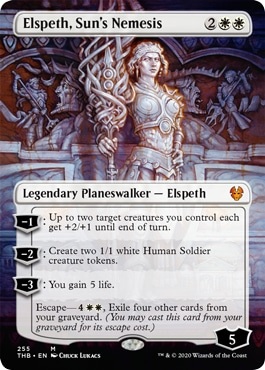Let's discuss Elspeth.
 She is the planeswalker protagonist in the newest Magic: The Gathering expansion set, Theros: Beyond Death. She was killed previously, thus the beyond death moniker. The White-aligned god Heliod stabbed her with her own spear in our first trip to Theros, and the entire current story revolves around her escaping the Underworld.
She is the planeswalker protagonist in the newest Magic: The Gathering expansion set, Theros: Beyond Death. She was killed previously, thus the beyond death moniker. The White-aligned god Heliod stabbed her with her own spear in our first trip to Theros, and the entire current story revolves around her escaping the Underworld.
During the first visit to Theros in 2013, artist Chuck Lukacs of Portland, Oregon was tapped to make twenty-four oil paintings of marble scenes for Face the Hydra, a challenge deck used at the Theros Game Day. You would battle against a deck with Chuck's art to defeat a hydra with special rules. The gorgeous marble scenes were so impressive that Chuck received a phone call about the return to Theros.
Take a look at them below and experience them yourself.

The Vanquisher

The Warrior

The Hunter
Two dozen paintings and a half decade later, Chuck was asked to paint the main character, planeswalker and protagonist, Elspeth.
He had already painted Elspeth as The Champion and as a statue in Hall of Triumph, the Hero's Path promotional card. He had the skill, he just needed the prompt.
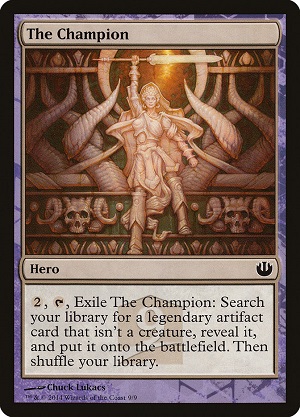 | 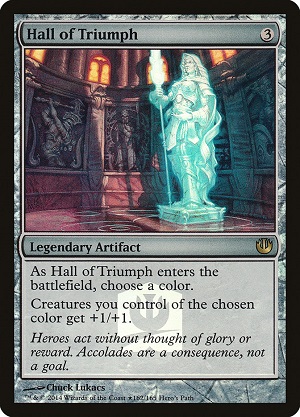 |
He went to work and made a few sketches for composition. Look at the gods on either side of her and how he varied them:
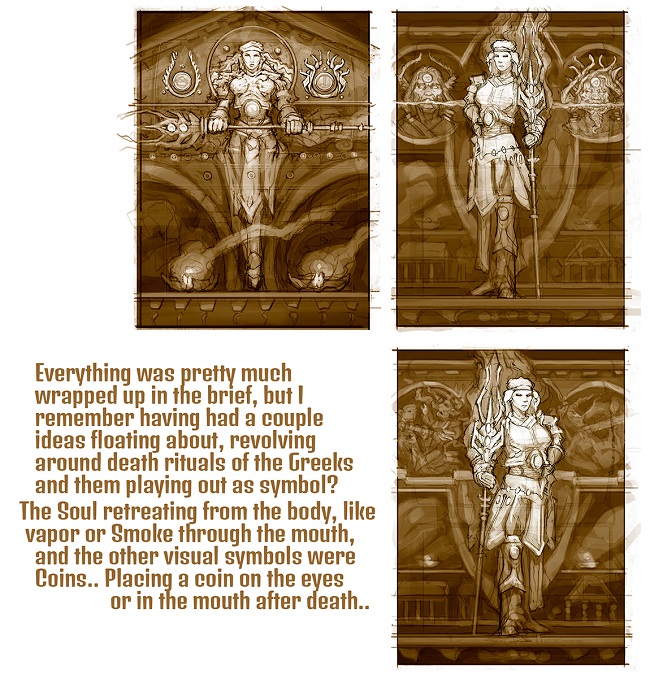
Take a look at the background again. You can see little Greek inspired buildings. You can see how the composition balances on left to right, while keeping focus with the usage of white marble. They balance and focus in the legs from a distance, where even the small pillars read on a card!

He also tried a lot of variety in the scenes behind Elspeth.
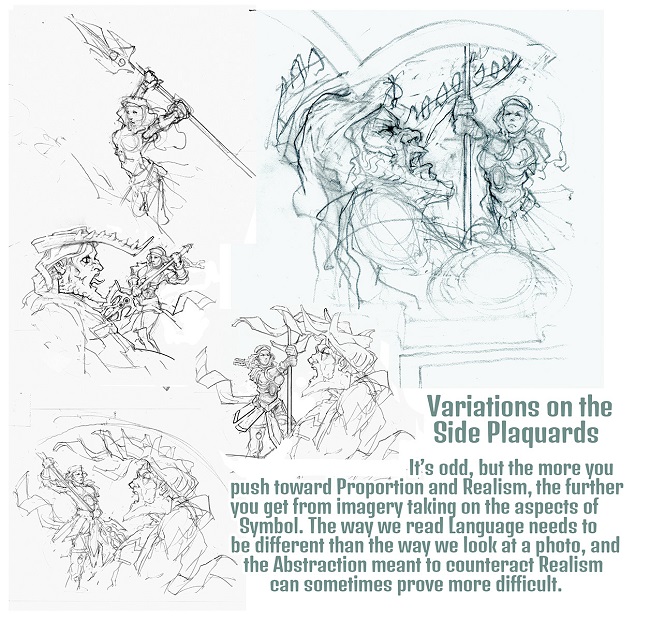
He shot extensive reference with his trusty maquette, lit in many different ways, then added some overlaid photos to make it feel right with his shot reference.

The below photo is the actual pencil sketch he turned in, notice the leg and hip placement!
Pay particular attention to the layout and upper right adornments. Chuck knew the Greek style of what it should look like, and made it Magic by fantasizing it up for Theros. Normally the styling and specific designs are shown in things like the style guide for the tribes of Theros, and he had to keep it unique and fitting.
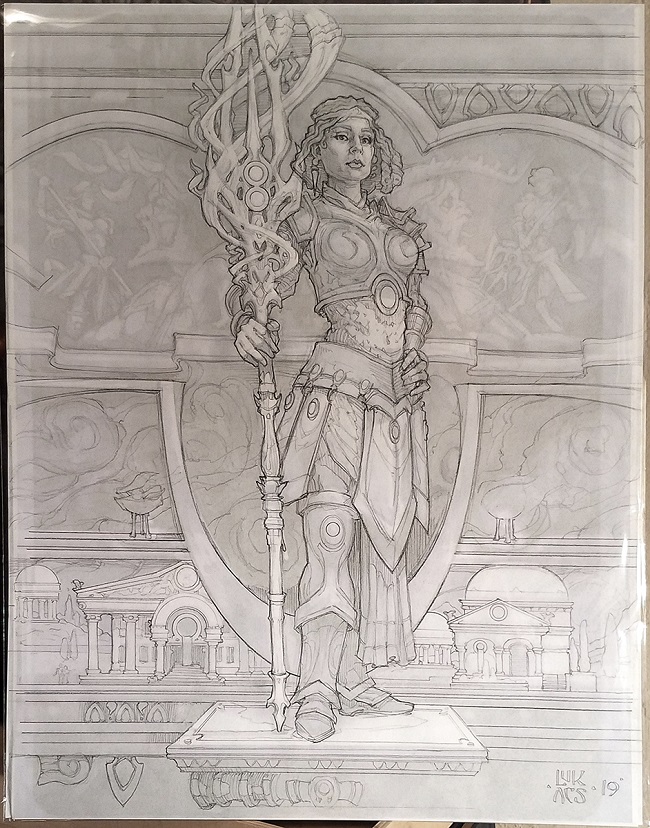
Before color was added, Chuck had studied extensive Greek and Roman statues for his massive series. He knew that originally they were colorful, to the point of being gaudy. He tried some gold and polychrome stone treatments from major to diminished roles to see how it shaped up at the sketch stage digitally.
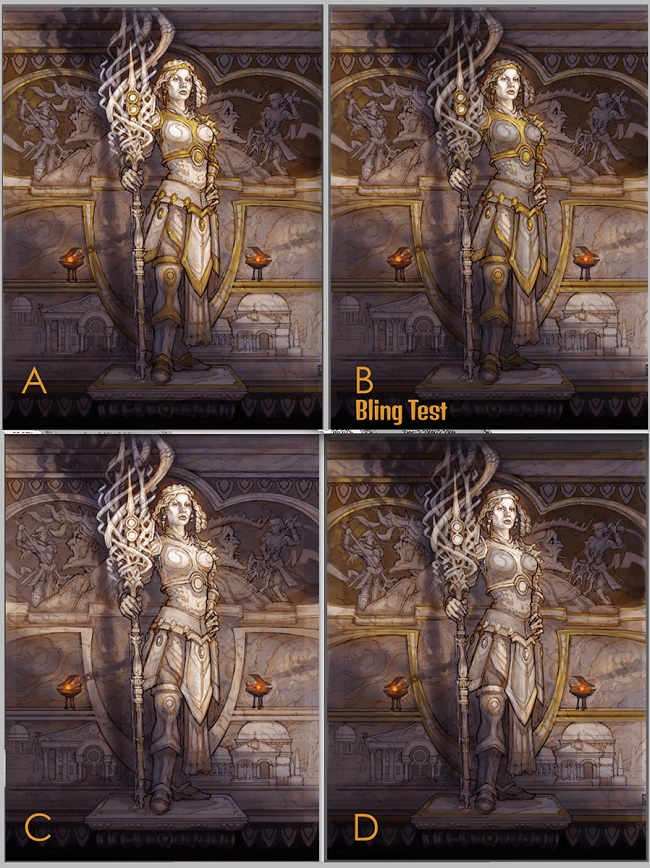
They felt too costumey, he said, almost like a Las Vegas show, and he toned it back to keep some of the gold as Volkan Baga originally made as filigree upon her armor. It felt new, yet connected visually to its predecessor.
He got to working on the side placards and had a bunch of variety, showing the death of both Xenagos and Heliod, and Elspeth's final pose struck a balance with so many visual elements at play.
Once approved, Chuck went onward to the underpainting. This is generally when artists complete a sketch in pencil, then scan it in. Working with a printout of the traditional sketch, it's then adhered/glued to a panel or board and corrected with Sienna and Umber. After the underpainting is finished, Chuck then goes on to wash in transparent color for an initial wash.
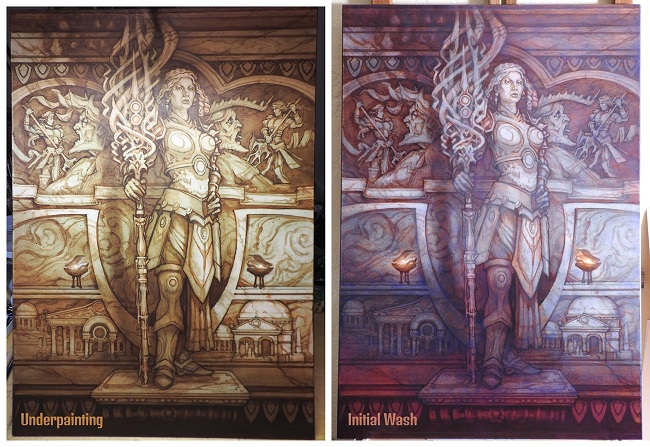
A closer look at the underpainting shows us his tight detailing on Elspeth, and looser approach on the placards to keep them from fighting for focus. Normally you could blur them in a digital work, though that's not possible here in a traditional oil.
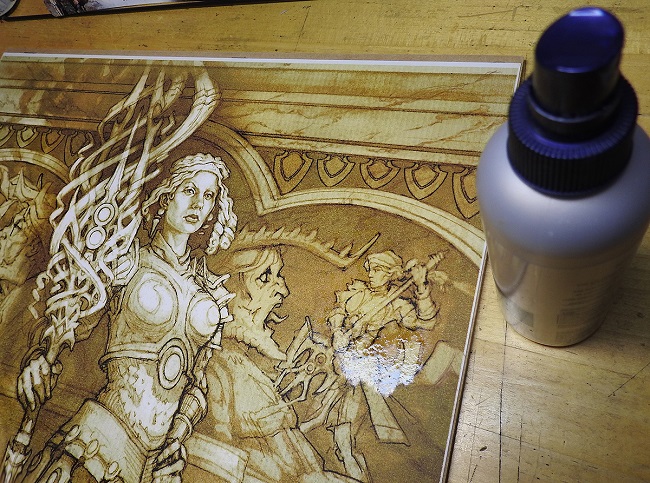
Notice the shadow that Chuck painted behind Elspeth. That separation, that depth helps to narrow focus and makes the piece go from good to great. It adds realism without sacrificing his personal stylization.
I want to point out his effortless ability to let paint move itself for the marble accents. He pushed paint until the solid pieces of marble look real.
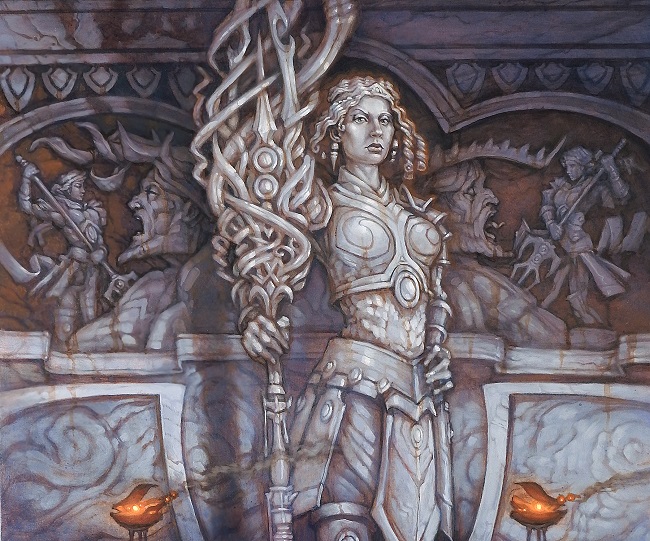
This is Chuck's penultimate final as you can see the eyes sculpted into the statue. If you have visited Greece or Rome, you see a lot of blank eyes because they were painted. If not, they were carved out, like shown below.
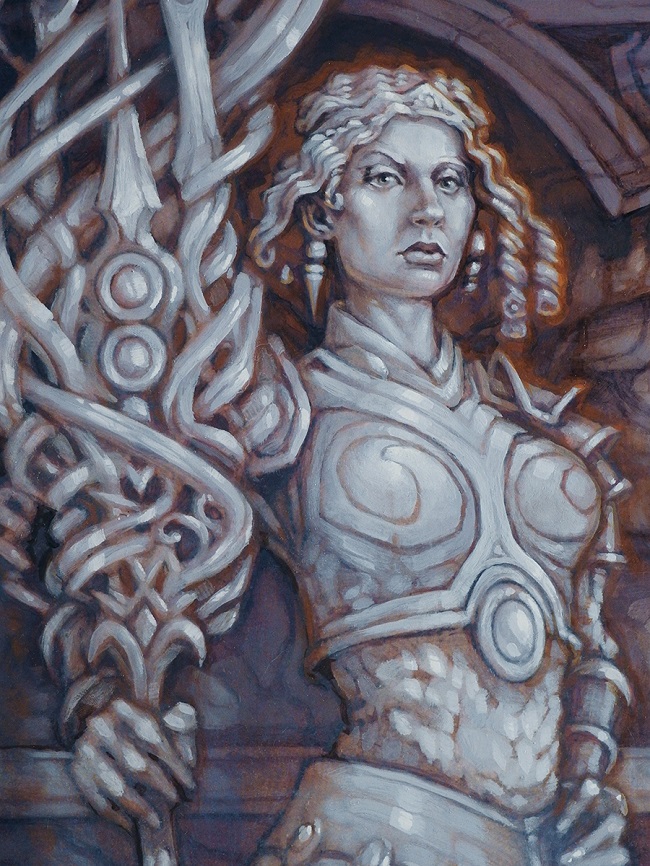
Chuck made a couple digital changes like the eyes blanked, and adding a little more glow. Notice that both her crown and the shapes and curls of medierranean hair change for the card as well.
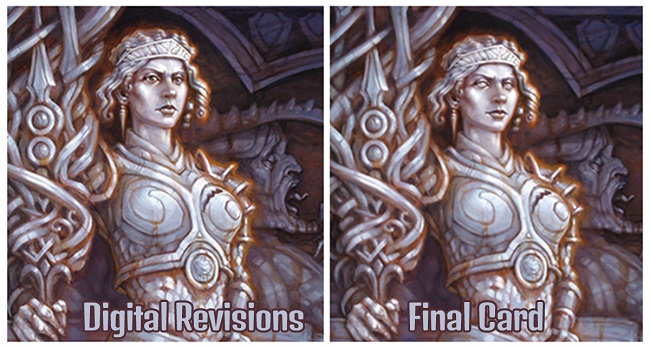
The original painting is 17" x 24", oil on paper on panel. It is huge and after nearly a decade, represents the artist's trajectory of beginning work on Theros and now hitting the pinnacle of painting the iconic Elspeth.
This is nothing short of a masterpiece by Chuck Lukacs.
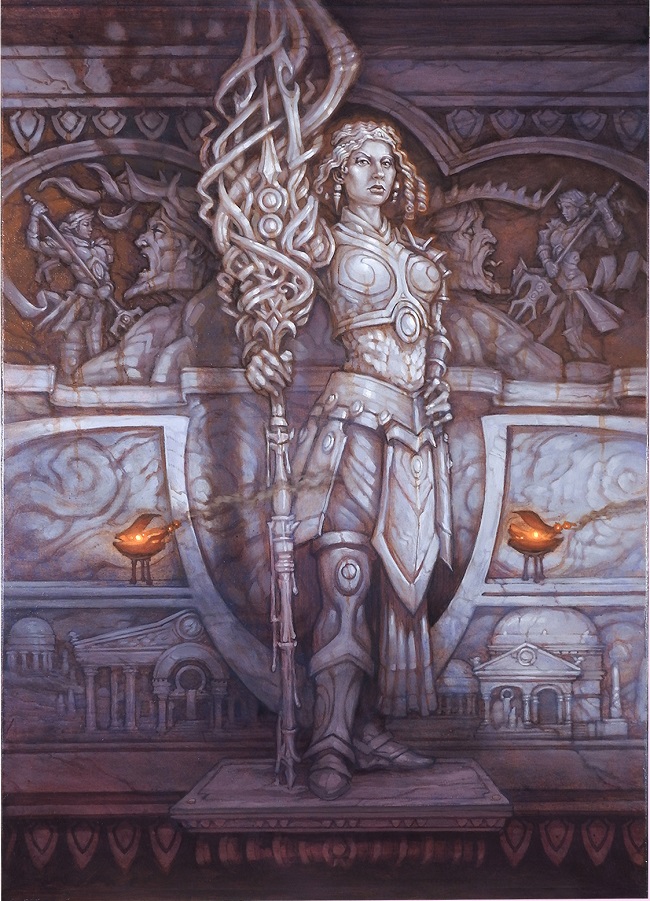
-Vorthos Mike

















